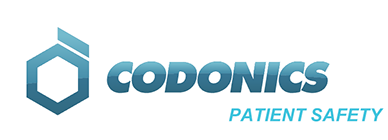
RFID use is expanding in healthcare. How do you see it improving patient safety and clinician efficiency?
MIKE:
Besides inventory control, I see RFID used for automating track and traceability from the manufacturer to the bedside and into the patient record. RFID offers the convenience and the capacity to contain more information about that medication like Lot number, Expiration date, Serial number, who prepared the medication, at what time, etc. This can be a critical capability where patients who may have been exposed to recalled or suspect medications can be quickly identified and treated accordingly to minimize exposure and possible adverse events. Since RFID technology can provide this information directly to the EMR and patient record at the time of administration, operational and regulatory efficiencies can be immediately recognized.
What are the current challenges in adopting RFID in healthcare?
MIKE:
It is currently a Chicken and Egg scenario. Pharmaceutical companies need to make more RFID-labeled medications, and healthcare facilities need to employ more RFID technologies. To get healthcare to adopt more RFID technology, there needs to be more value created by using RFID than just better inventory control. Besides being able to read RFIDs for track and trace, RFIDs can also be written to, allowing the RFID to take on a personality, so to speak, as it travels throughout the healthcare system. In other words, RFID does not have to stop at the dispense as it travels from the dispense to the provider to the possible device and ends up at the patient until it is consumed and disposed of. All this history and data collected is vital for many reasons, especially in an era where data analytics is growing and helping us make critical decisions and improve safety and efficacy. However, the challenge remains to get all the vendors who create these systems in terms of chips, components, encoding, interoperability, and other associated hardware and software within the food chain to cooperate and work together to make this possible. Of course, standardization of all aspects of RFID and the supporting technologies will help to make this happen sooner.
Where do you see the future of RFID in healthcare?
MIKE:
The future lies in finding more applications for RFID, like traceability, trackability, patient record integrity, and completeness. Just like in the retail industry, where UHF is used to track inventory on pallets and warehouses, UHF in healthcare can be used to track inventory in pharmacy warehouses and medication dispensing carts (read many). Healthcare offers many diverse applications for both UHF and NFC RFID, like programmable Infusion pumps and blood distribution safety checking, especially in the perioperative environment where the action is fast passed, and large volumes of blood need to be administered quickly, track and trace lab samples taken from patients with time stamps, markers, and accurate anatomy locations, management of expensive and critical pieces of equipment that is shared among departments but needs central sterilization and servicing like endoscopes and other specialized equipment used in the perioperative environment.
Then, just like in retail, where NFC is used at the cash register to read just one item in close proximity, in healthcare, it can be used at the bedside or the administration point to communicate what is being administered based on the conditions and to record and document the administration (read one) and provide a last-minute safety check.
Link: https://plusrfid.com/rfid-value-creation-across-the-continuum-of-care/
